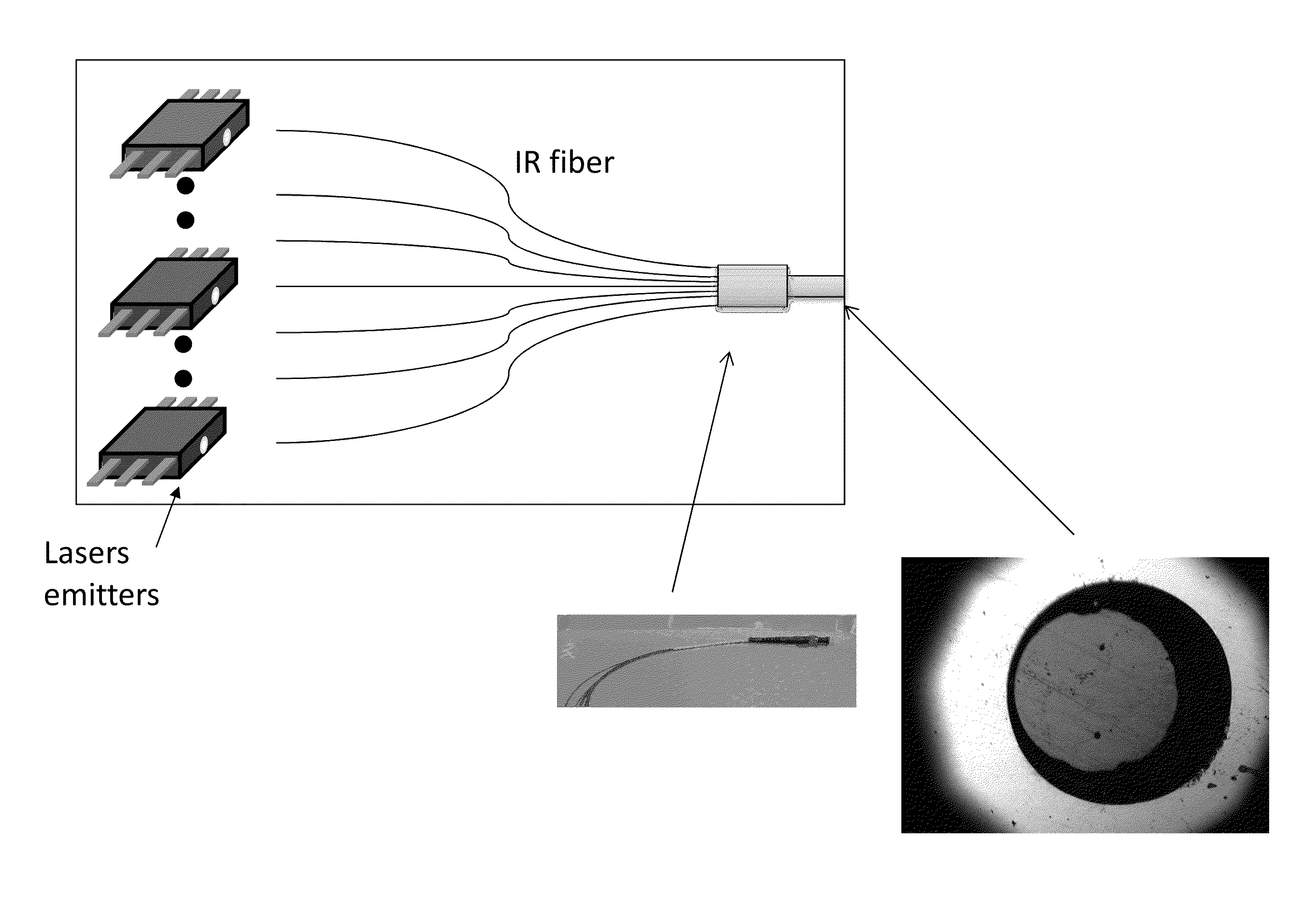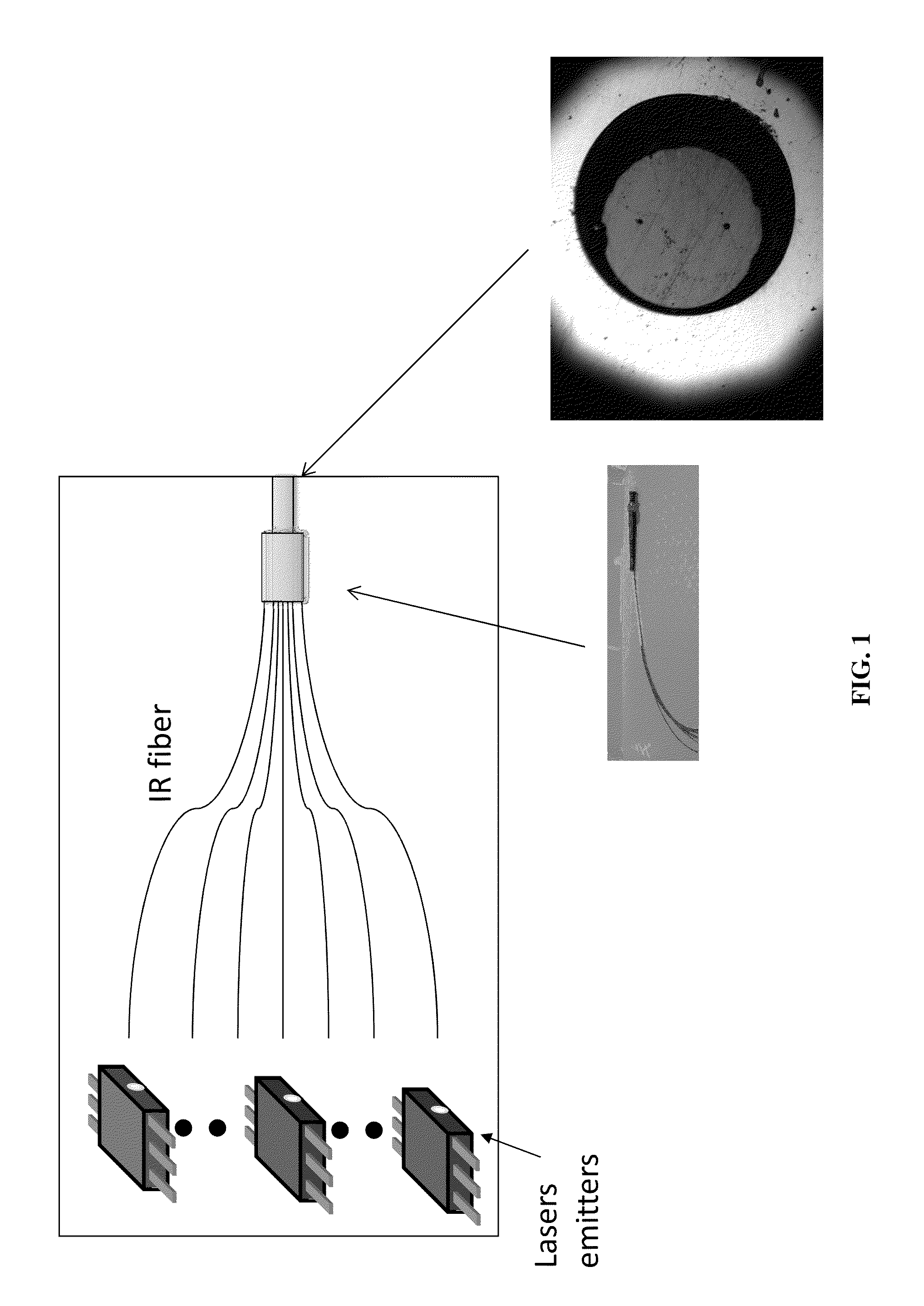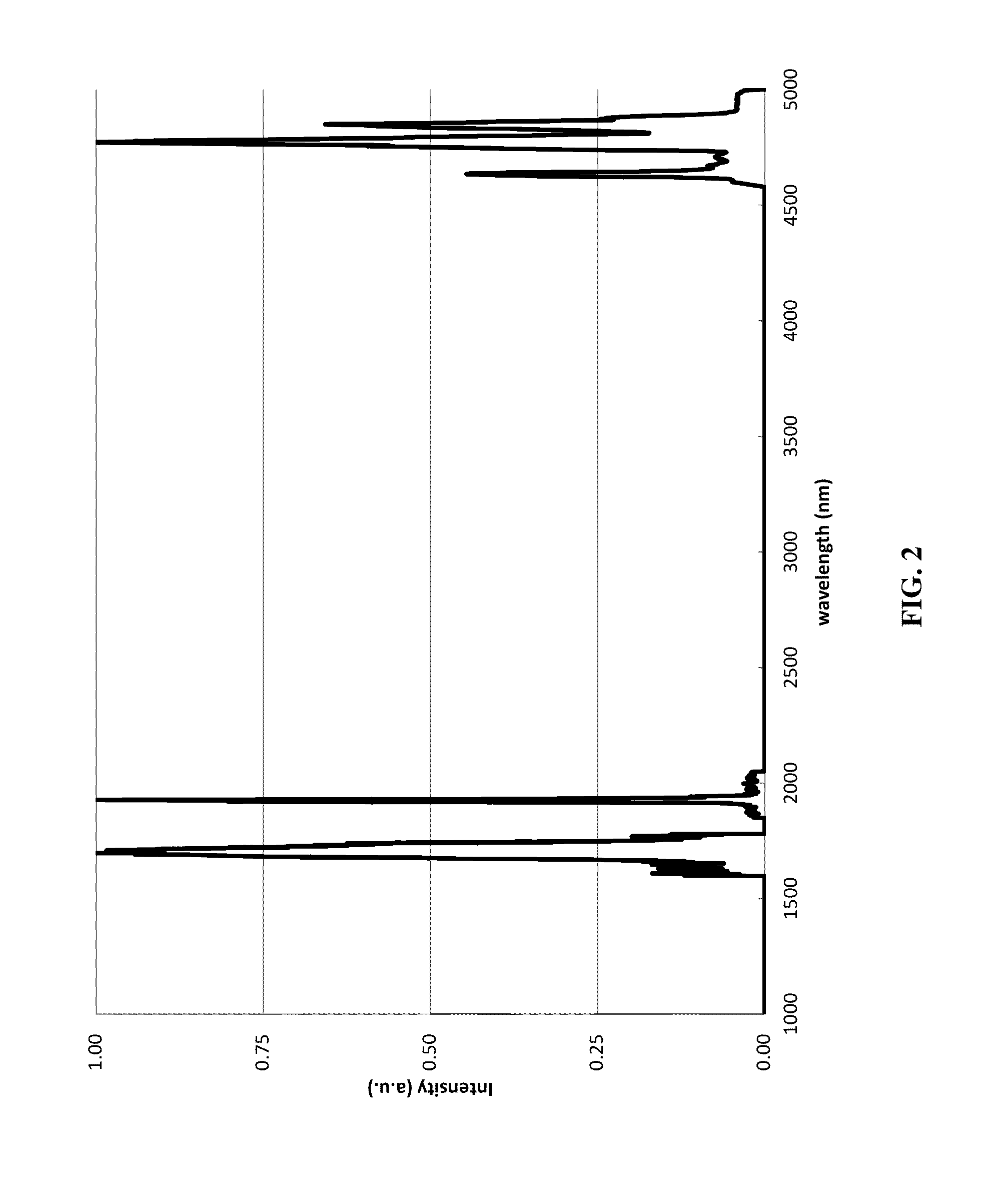Wavelength and power scalable waveguiding-based infrared laser system
a waveguide and infrared laser technology, applied in the field of infrared fiber optics, can solve the problems of increasing limiting the mechanical mounting of the system, and limiting so as to reduce the complexity of the beam combined source, reduce the complexity of the system, and limit the number of failure points
- Summary
- Abstract
- Description
- Claims
- Application Information
AI Technical Summary
Benefits of technology
Problems solved by technology
Method used
Image
Examples
example 1
[0027]A quantum cascade laser with mid-IR emission (such as a laser emitter with wavelength centered around 4.6 μm) is coupled to a single mode chalcogenide optical fiber. A second quantum cascade laser with same emission wavelength and power is coupled to another identical optical fiber. Each optical fiber is fused together in a fiber based optical combiner, having a common output aperture and divergence. The coupling from each laser can be accomplished through a series of lenses, lensing of the output face of the optical fiber or direct optical bonding of the fiber to the emitter chip. Thermal and vibration isolation can be localized to the emitter to fiber region, not requiring coherence or stability across different laser emitters.
example 2
[0028]The system described in Example 1 where additional laser emitters at distinct wavelengths are added to the fiber combiner. Each laser emitter is coupled to a different fiber port, and the optical fibers can be multimode. FIG. 4 shows the endface of a multimode fiber coupler fabricated with chalcogenide fiber, prior to the fusion of all the cores.
example 3
[0029]A system of chip based laser emitters are fabricated in a single chip or bonded together onto a chip. The output of the laser emitters is routed into an array of waveguides in a silicon chip. The light is waveguided into an array waveguide grating and the output is coupled to a single output waveguide element.
PUM
| Property | Measurement | Unit |
|---|---|---|
| power | aaaaa | aaaaa |
| laser power | aaaaa | aaaaa |
| optical wavelengths | aaaaa | aaaaa |
Abstract
Description
Claims
Application Information
 Login to View More
Login to View More - R&D
- Intellectual Property
- Life Sciences
- Materials
- Tech Scout
- Unparalleled Data Quality
- Higher Quality Content
- 60% Fewer Hallucinations
Browse by: Latest US Patents, China's latest patents, Technical Efficacy Thesaurus, Application Domain, Technology Topic, Popular Technical Reports.
© 2025 PatSnap. All rights reserved.Legal|Privacy policy|Modern Slavery Act Transparency Statement|Sitemap|About US| Contact US: help@patsnap.com



